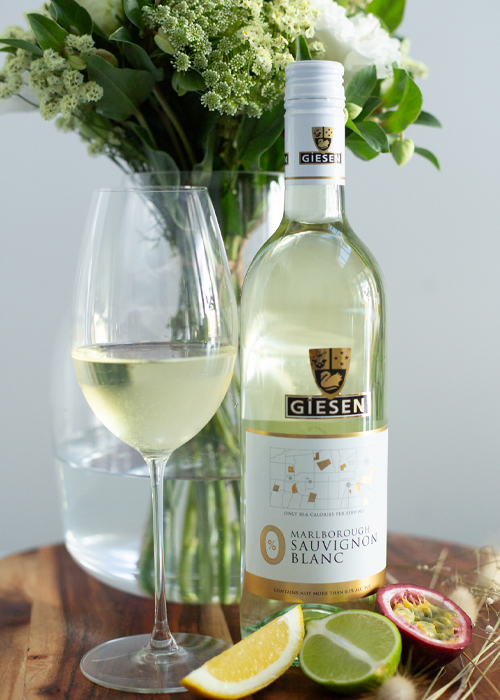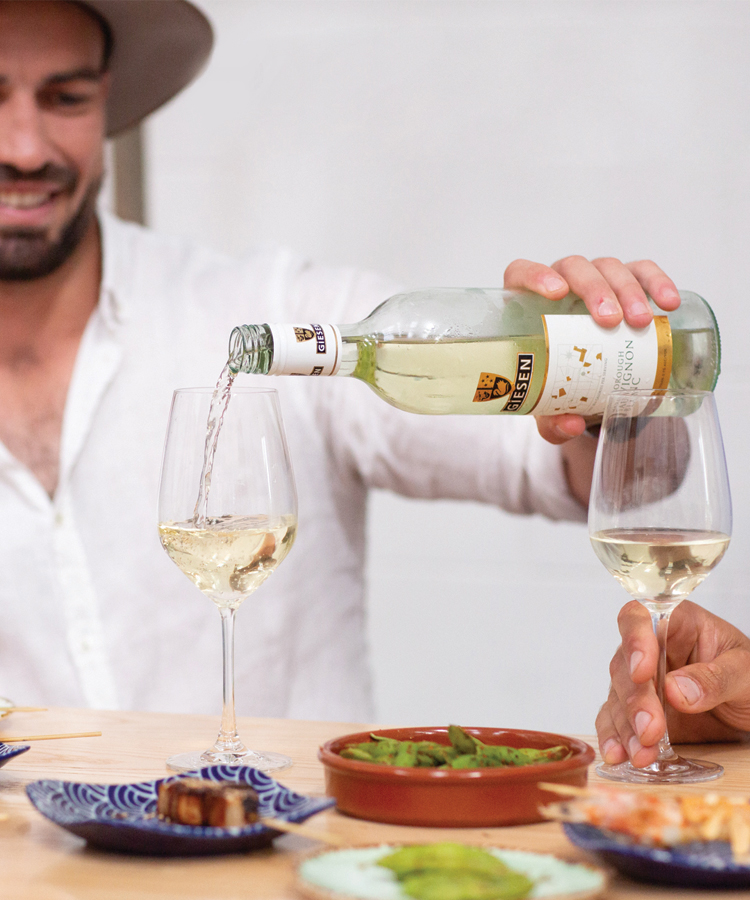
Whether pursuing wellness goals, or simply seeking a balance in your drinking regimen, alcohol-free wine provides the perfect solution. We know what you’re thinking — wine without the booze? Trust us, we were skeptical, too, though after some extensive research, we finally found our answer in New Zealand’s Marlborough region — and we were much more pleasantly surprised than we thought we’d be.
But beware – not all alcohol-free wine is created equal, and we’re not just saying that in regard to taste. In a sea of alcohol-free wines, only a few are actually produced using a veritable dealcoholization formula. Confused as to what that is? Not to worry. We’re going to break down everything you need to know about alcohol-free wine.
What Is Alcohol-Free Wine?
Alcohol-free wine is exactly what it sounds like — wine with little to no alcohol content. Great alcohol-free wine contains all the same flavors and structure, and provides the same level of taste, that an alcoholic bottle of wine would, just without the presence of ethanol.
How Is Alcohol-Free Wine Made?
It’s not as tricky as it sounds, though it’s important to know that many “alcohol-free” wines are simply just grape juice marketed as such. True alcohol-free wines endure the entire vinification process (fermentation, aging, etc.), then undergo a dealcoholization process, which removes the alcohol from the final product.
The biggest differences between these two products is that the former does not undergo any form of vinification or see any yeast, and is therefore simply unfermented grape juice — think Welch’s — whereas the latter has been fermented, aged, and fully vinified, and then has its alcohol content removed prior to bottling.
How Does the Alcohol-Removing Process Work?
There are two main ways in which alcohol can be removed from wine. The most popular way in which alcohol is taken out of wine is through vacuum distillation, a process that heats the wine up and allows the ethanol to evaporate. High-quality producers of alcohol-free wine are extremely careful to heat the wine to the lowest temperature possible (around 35 degrees Celsius), which allows evaporation to take place without cooking the wine. The result is an authentic, true-to-taste “wine” with an ABV no higher than 0.5 percent.
The second way in which wine can be dealcoholized is through reverse osmosis. Although this process has been proven successful, the technique uses a significant amount of water, which renders it not so environmentally friendly. Additionally, the removed ethanol cannot be reused and repurposed, as it is too diluted. With vacuum distillation (the former process), ethanol removed from wine can be used to create other products, which makes the first option a much more sustainable choice.
Marlborough-based Giesen Wines uses an advanced spinning cone technology (which is popular in the perfume industry) to delicately execute the dealcoholization/distilling process. First, the aromas are distilled and collected through vinification, then the alcohol is removed. The aromas are then recombined with the alcohol-free juice. The result is a dry, delicious, and thirst-quenching wine void of ethanol and low in calories.

So… Some Alcohol-Free Wine Actually Isn’t Wine?
Unfortunately, that’s correct. When shopping for alcohol-free wine, look for words like alcohol-removed or dealcoholization somewhere on the label to avoid buying overpriced grape juice marketed as such.
What Does True Alcohol-Free Wine Taste Like?
Because true alcohol-free wine undergoes the entire vinification process, great alcohol-free products should taste very similar to alcoholic wine. “Alcohol-free”wines that don’t undergo a yeast fermentation and aging process will simply taste like sugary grape juice — in other words, tasty, but nothing like wine whatsoever.
Giesen’s new-to-the-market 0% Sauvignon Blanc oozes with flavors of lime, grapefruit, and lemon shortbread. Full-bodied, and flavor-packed, this bottle promises to leave your palate yearning for more (without having to experience the after-effects of excess alcohol intake).
What Is the Exact Calorie Count/ABV of Alcohol-Free Wine?
Most alcohol-free wines contain about 20 calories per 8-ounce pour, which is 85 percent less than full-strength alcoholic wines — even more reason to feel less guilty for indulging your craving. Alcohol-free wines generally will not contain more than 0.5 percent ABV.
How Should I Best Enjoy Alcohol-Free Wine?
Alcohol-free wine is best enjoyed in any situation where alcoholic wine would be served. Simply pop a bottle after work for a refreshing happy hour at home or pair with your favorite meals.
Note: When pairing alcohol-free wine with food and snacks, follow the same guidelines that you would when matching alcoholic wine with food. For example, think about the alcohol-free wine’s acidity, structure, and tannins (where applicable), then consider the meal that is being served.
Cooking up a hearty, meat-heavy dish? Look for an alcohol-free red with ample acid and moderate levels of tannins. Preparing a seafood-dominant dish or snacking on salty happy-hour snacks? Grab a bottle of Giesen 0% Sauvignon Blanc for an out-of-this-world pairing.
What Is a Great Example of True Alcohol-Free Wine?
After searching high and low for great examples of true alcohol-free wine, we’ve found that Giesen 0% Sauvignon Blanc is one of the best in the business. For a bit of background, the Giesen family moved from Germany to New Zealand’s South Island back in 1981, after falling in love with the island’s beauty, warm weather, and unbelievable potential for world-class wine production. After four decades spent creating alcoholic wines in the heart of Marlborough, the Giesen brothers tried their hand at making an alcohol-free option, and the results were nothing short of mesmerizing.
Fruit for Giesen’s 0% Sauvignon Blanc comes from two vineyard sites in Marlborough’s Wairau and Awatere Valleys. Post-harvest, the grapes are fermented with yeast and vinified to a normal ABV before undergoing the dealcoholization process via spinning cone technology. The result is a crisp, full-bodied, and refreshing wine loaded with delicate flavors of fresh lime, grapefruit juice, and tropical fruits.
Crisp, bright, and thirst-quenching, this bottle is perfect for enjoying at home or sharing with friends, without ever having to experience the after-effects of consuming alcohol. Pair with light hors d’oeuvres, seasonal salads, or linguine tossed with clam sauce. Thankfully, wellness goals and a love of wine needn’t be mutually exclusive.
Giesen 0% Sauvignon Blanc is available at most Whole Foods nationwide, Amazon.com, or text ZERO to 926-848 to order now.
This article is sponsored by Giesen Wines.
